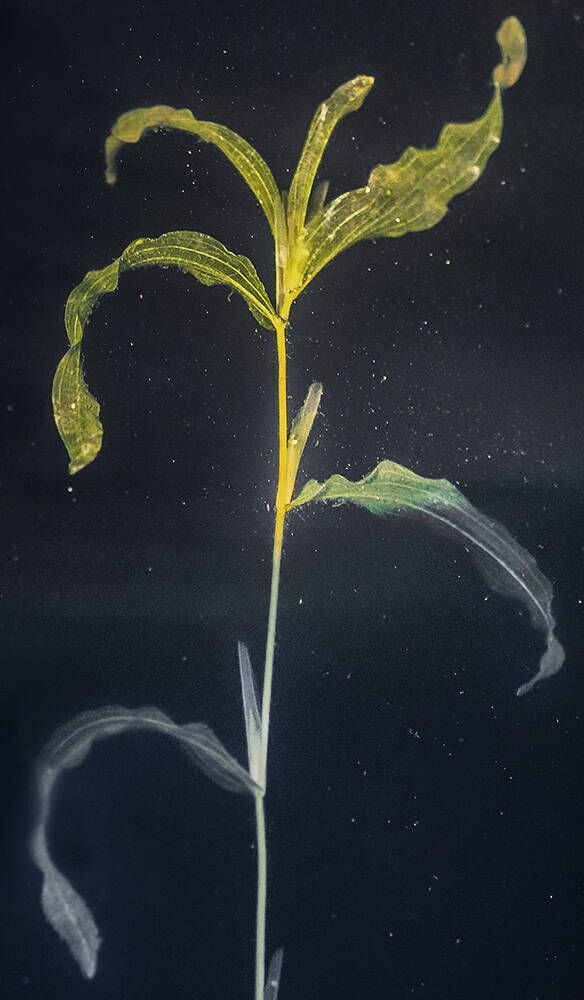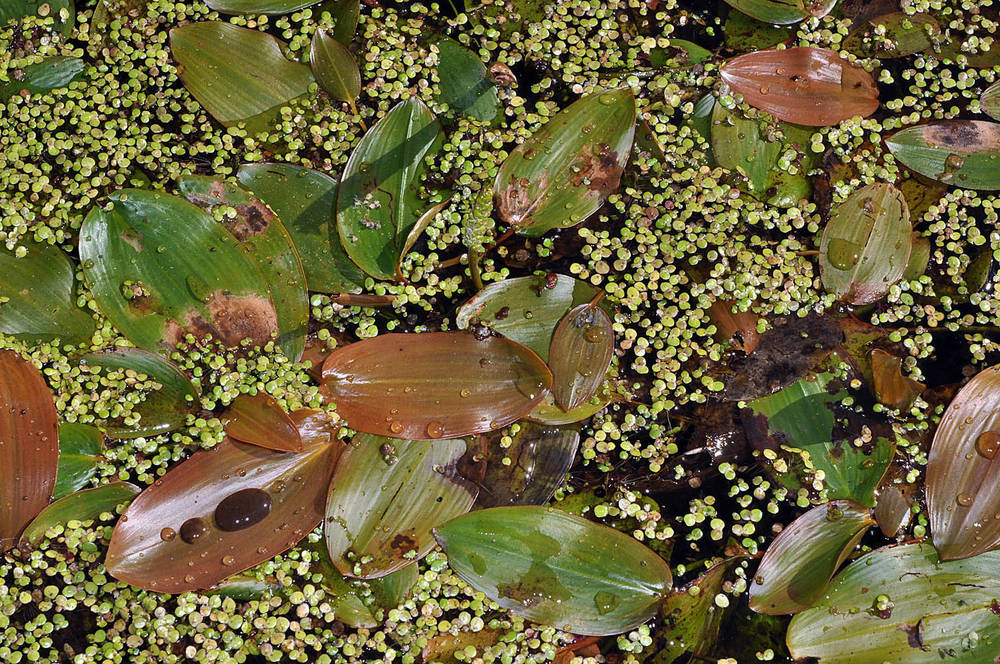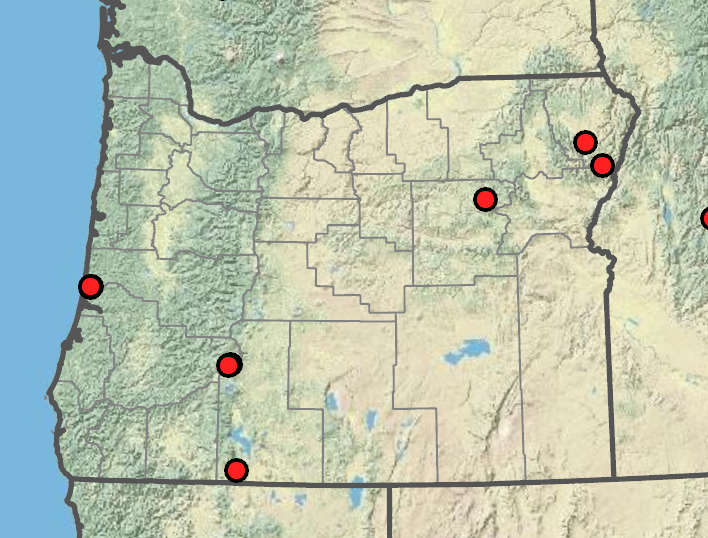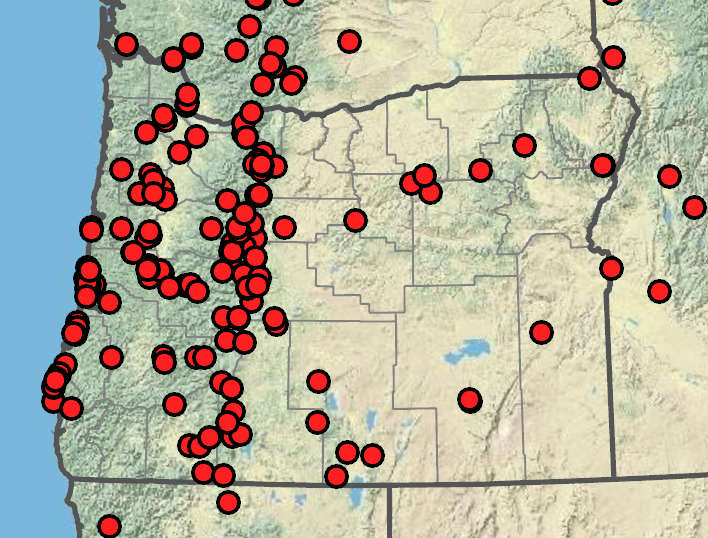Potamogeton praelongus
Potamogeton natans
white-stalked pondweed, white-stemmed pondweed
floating-leaf pondweed
terete; to 210 cm; nodal glands absent.
terete, 30–90 cm; nodal glands absent.
submersed, sessile, attached at stem nodes, not attached to stipules;
stipules 30– 81 mm, fibrous, shredding at tip;
blades linear-lanceolate, 50–200 × 10–30 mm;
base clasping but without basal lobes, rarely wavy;
tip obtuse;
veins 11–33.
submersed and floating.
elliptic to ovate, 35–110 × 15–60 mm;
base rounded to cordate;
tip acute to rounded;
veins 17–37;
petioles 55–290 mm.
sessile, attached to stem nodes, not attached to stipules;
stipules 45–100 mm; whitish, fibrous;
tip obtuse;
blades rigid, linear, subterete, 9–20 cm × 0.7–2.5 mm;
base slightly tapering;
margins entire;
tip obtuse;
veins 3–5, obscure.
emersed;
spikes cylindric, 34–75 mm;
peduncles terminal or axillary; erect to spreading, 10–30 cm.
emersed;
spikes cylindric, 25–50 mm;
peduncles terminal; erect to ascending, 45–95 mm.
sessile, obovoid; turgid, 4–5.7 × 3.2–4 mm; greenish brown, dorsally keeled, occasionally laterally keeled;
beaks erect, 0.6–1 mm.
sessile, obovoid; turgid, 3.5–5 × 2–3 mm, green to greenish brown, not keeled;
beaks erect to apically recurved, 0.4–0.8 mm.
Potamogeton praelongus
Potamogeton natans
Neutral to alkaline waters of lakes and streams. 0–1900m. BW, Est. CA, ID; north to British Columbia, east to Newfoundland, south to Mexico; Eurasia. Native.
This species hybridizes with P. alpinus, P. crispus and P. gramineus.
Ponds, lakes, and slow-moving streams. 0–2000 m. BR, BW, Casc, CR, ECas, Est, WV. CA, ID, NV, WA; north to Northwest Territories, east to Newfoundland, southeast to NM; Eurasia. Native.
Potamogeton natans is a common pondweed of still or slow moving water. Its leathery floating leaves are often cordate at the base. Its petioles have reflexed tips with a light-colored band that contrasts with darker tissue below. Its submersed leaves are rigid and subterete. This species hybridizes with P. nodosus.
Nick Otting, Richard Brainerd, Barbara Wilson
Nick Otting, Richard Brainerd, Barbara Wilson
- Local floras:
BC,
CA,
OR,
WA
- Local Web sites:
CalFlora,
CalPhotos,
Flora NW,
PNW Herbaria
WildflowerSearch
iNaturalist (observations)
USDA Plants Database
- LBJ Wildflower Center
- SEINet
- Plants of the World Online
- Encyclopedia of Life
- Wikipedia
- Google Image Search
- Local floras:
BC,
CA,
OR,
WA
- Local Web sites:
CalFlora,
CalPhotos,
Flora NW,
PNW Herbaria
WildflowerSearch
iNaturalist (observations)
USDA Plants Database
- LBJ Wildflower Center
- SEINet
- Plants of the World Online
- Encyclopedia of Life
- Wikipedia
- Google Image Search





